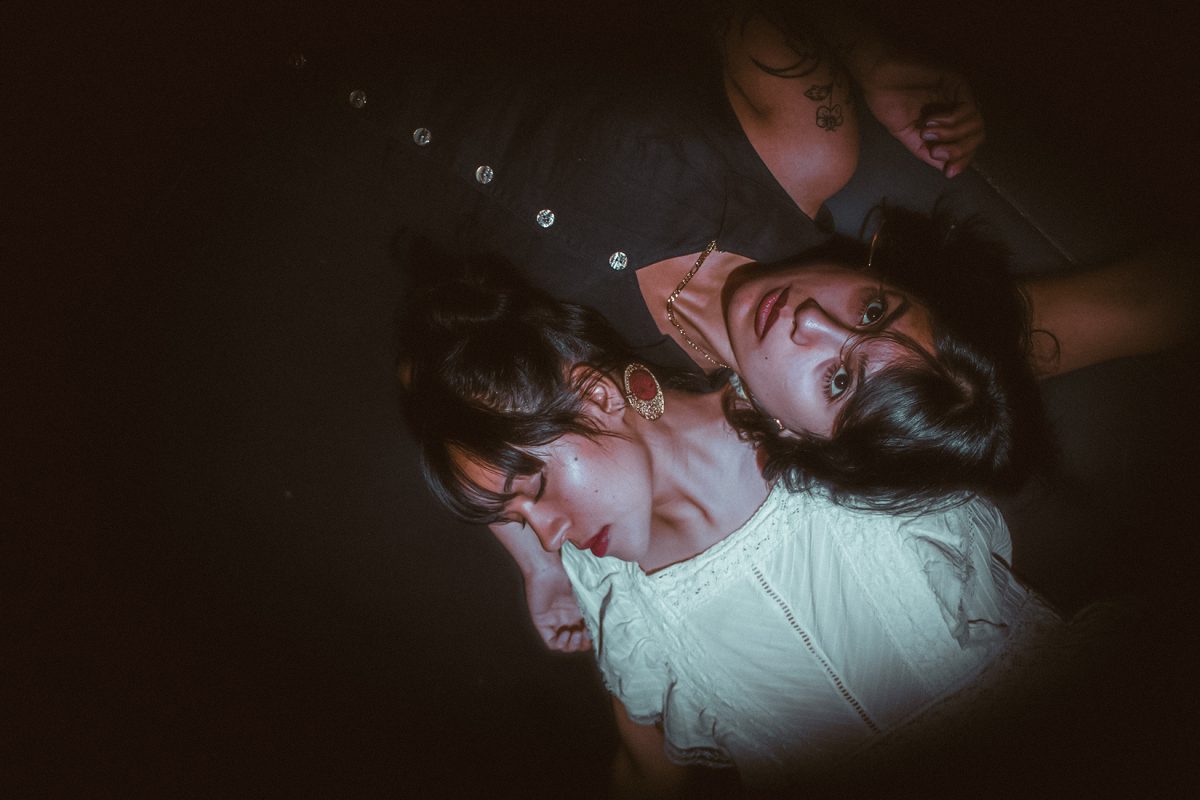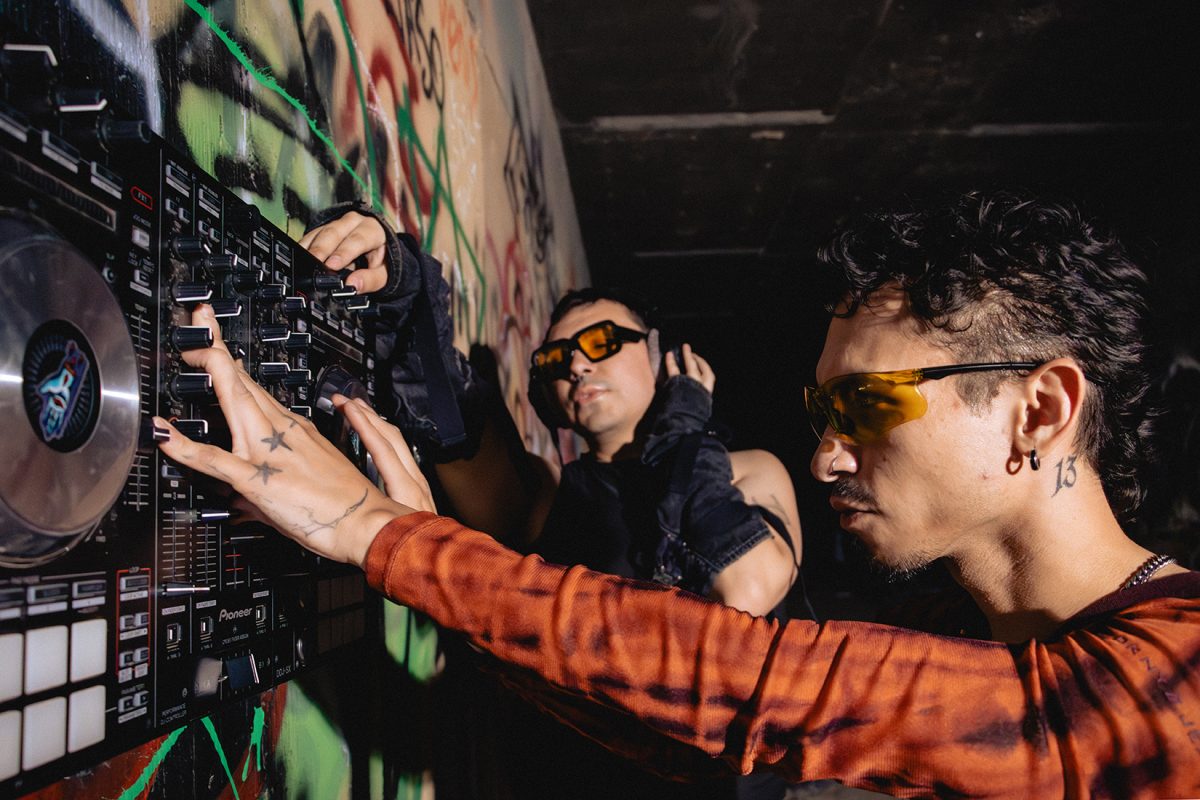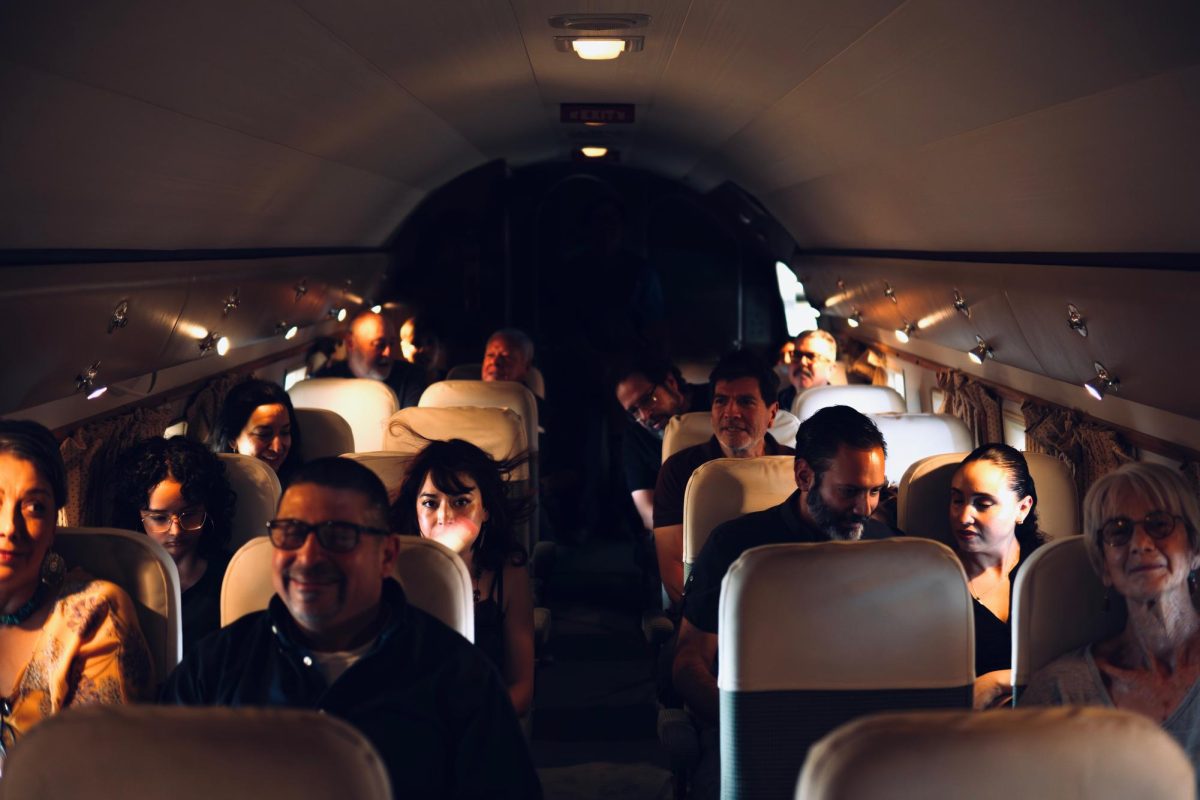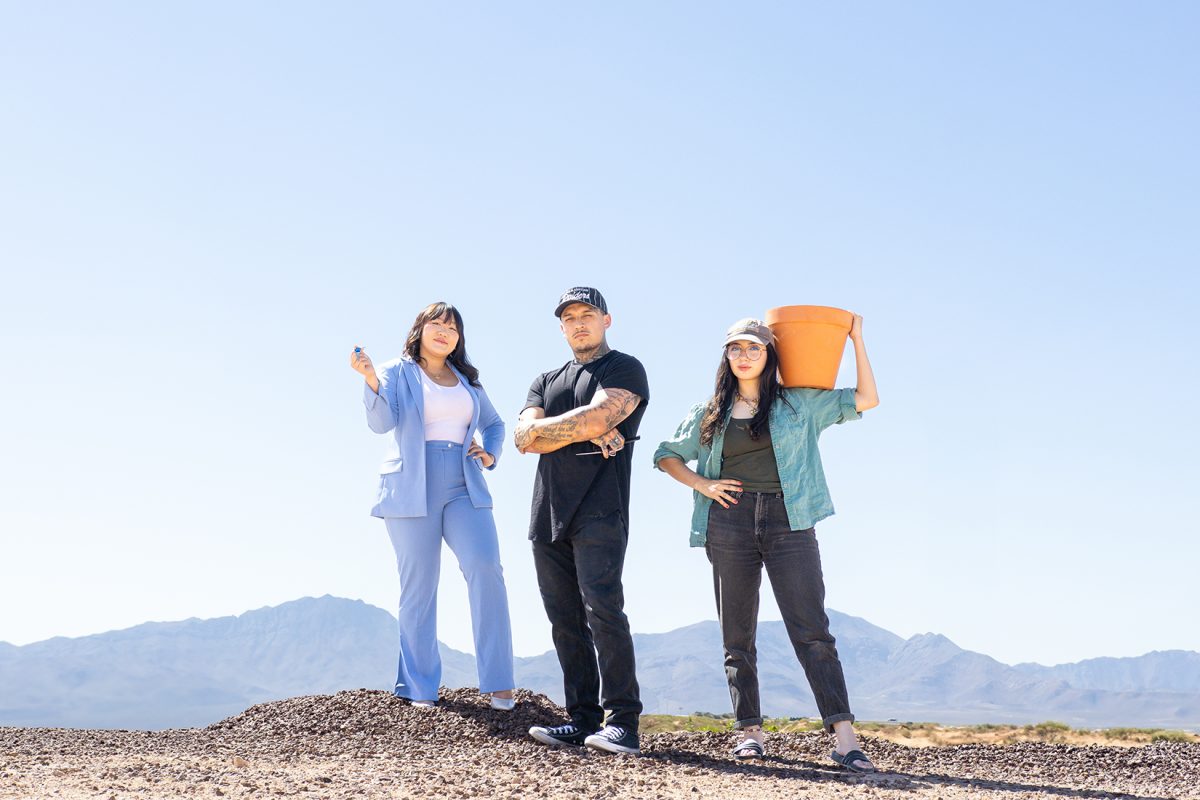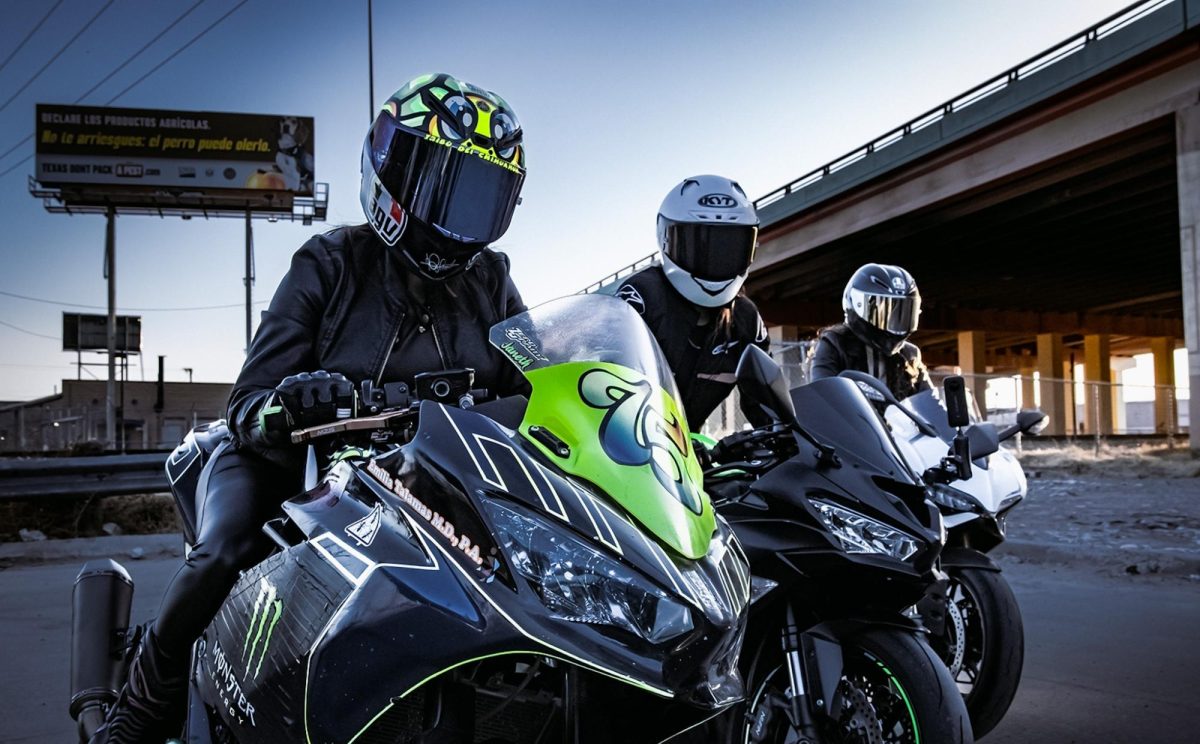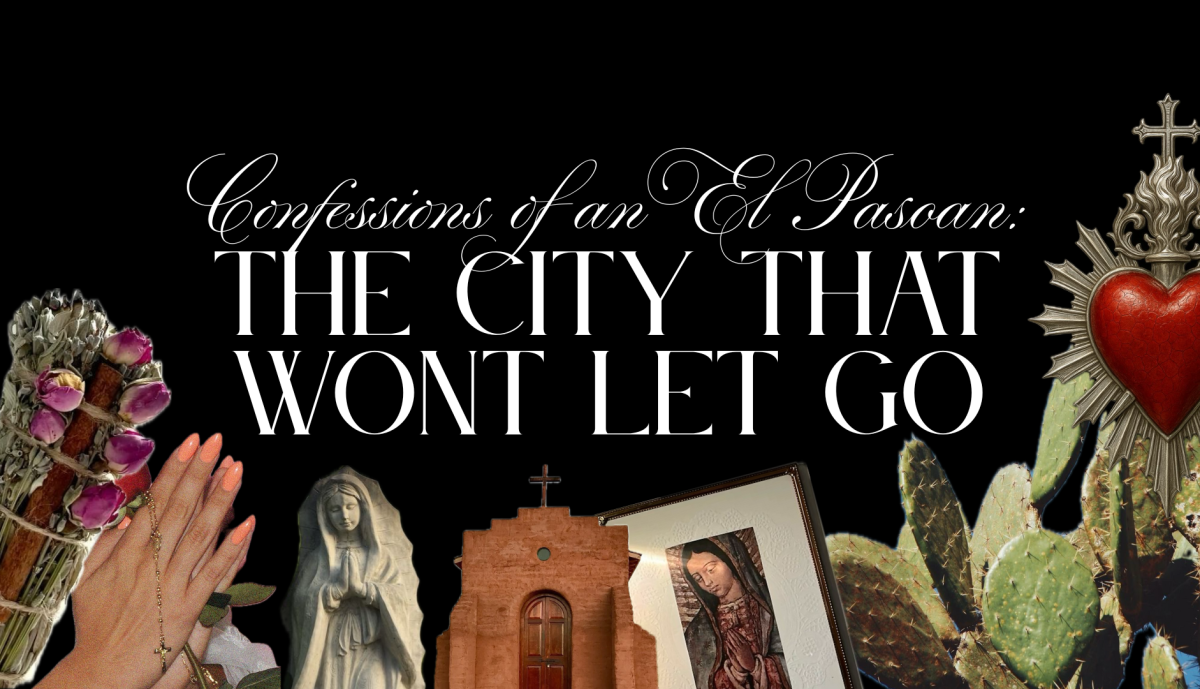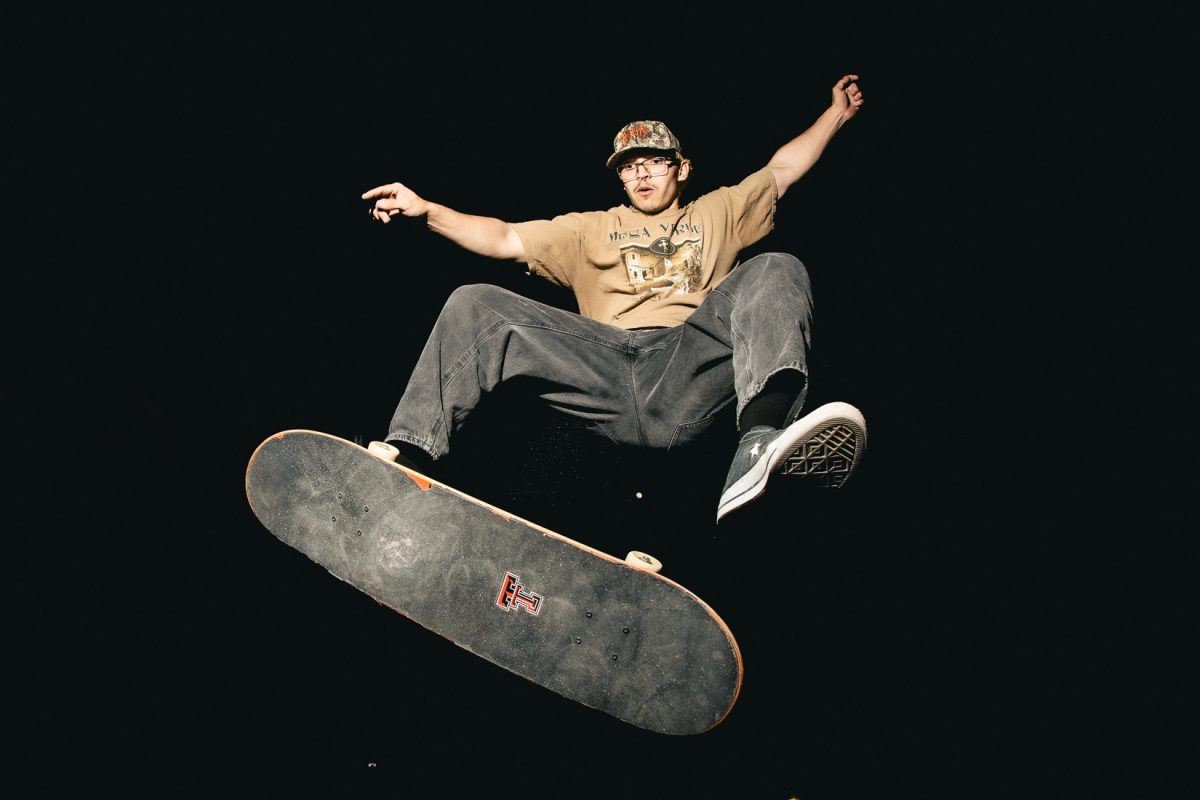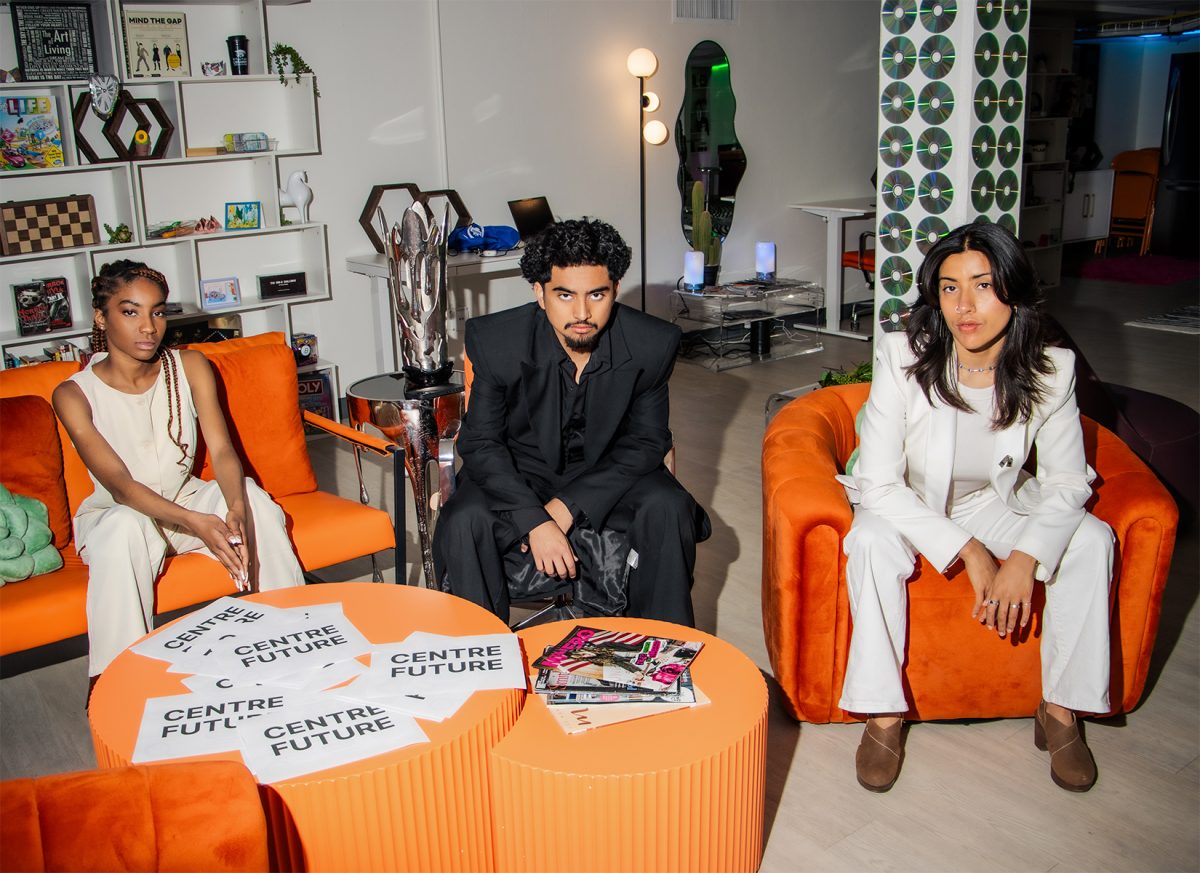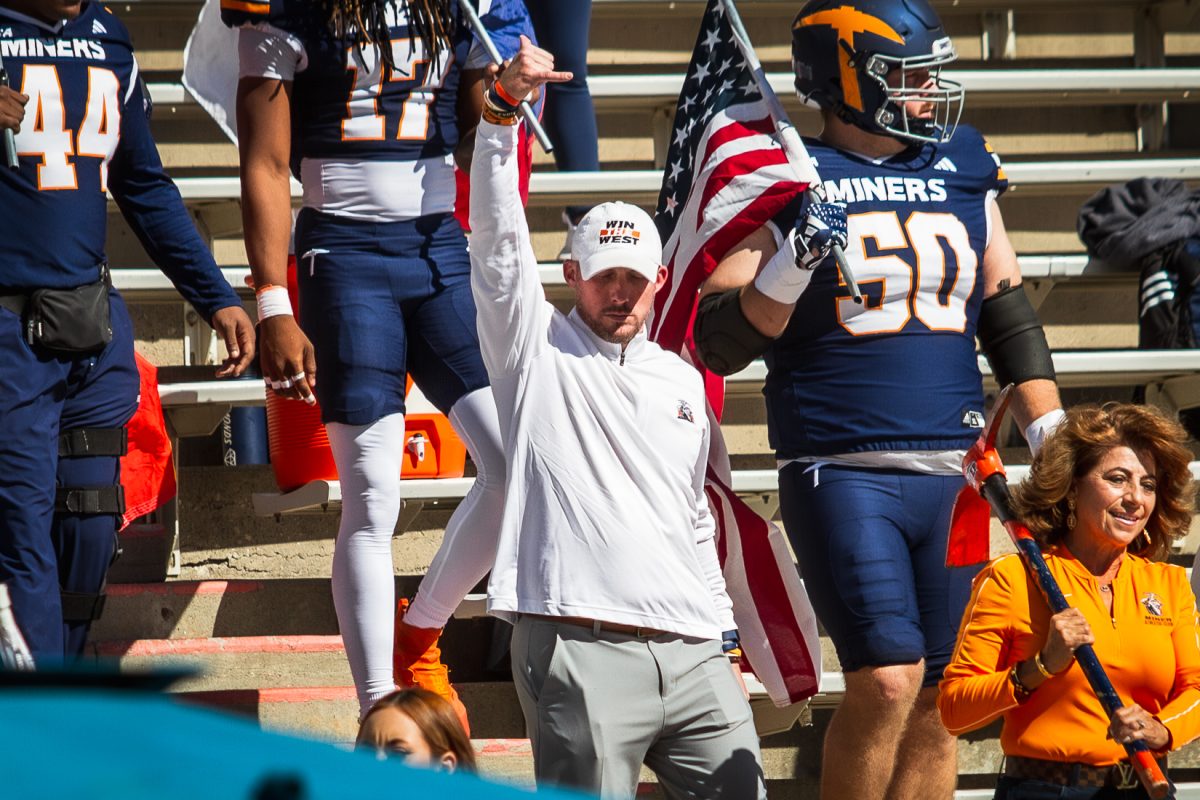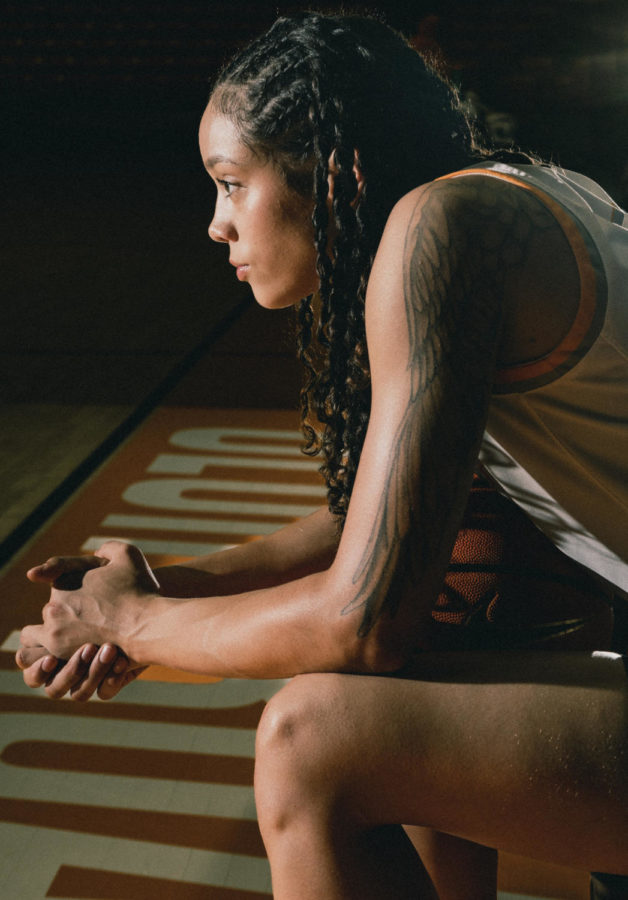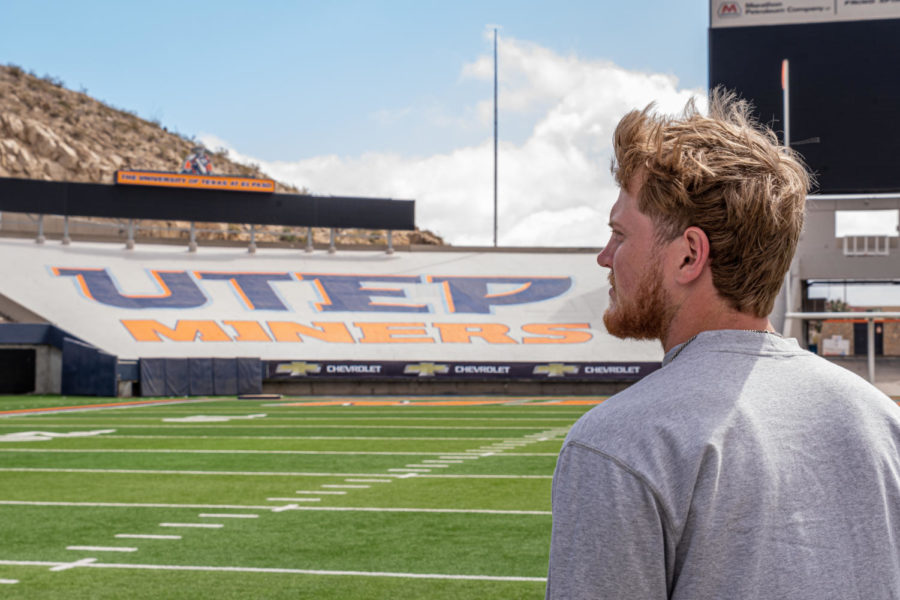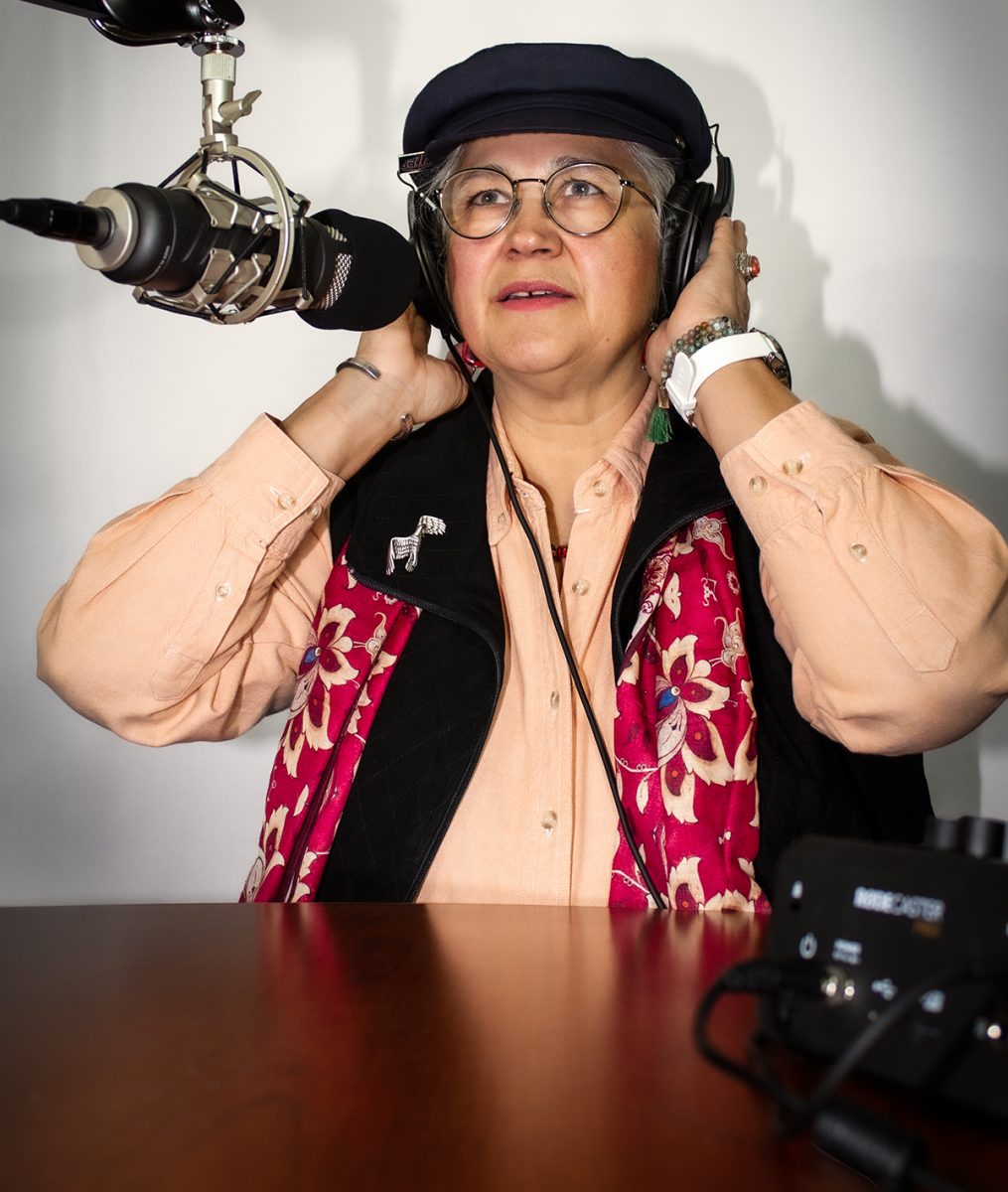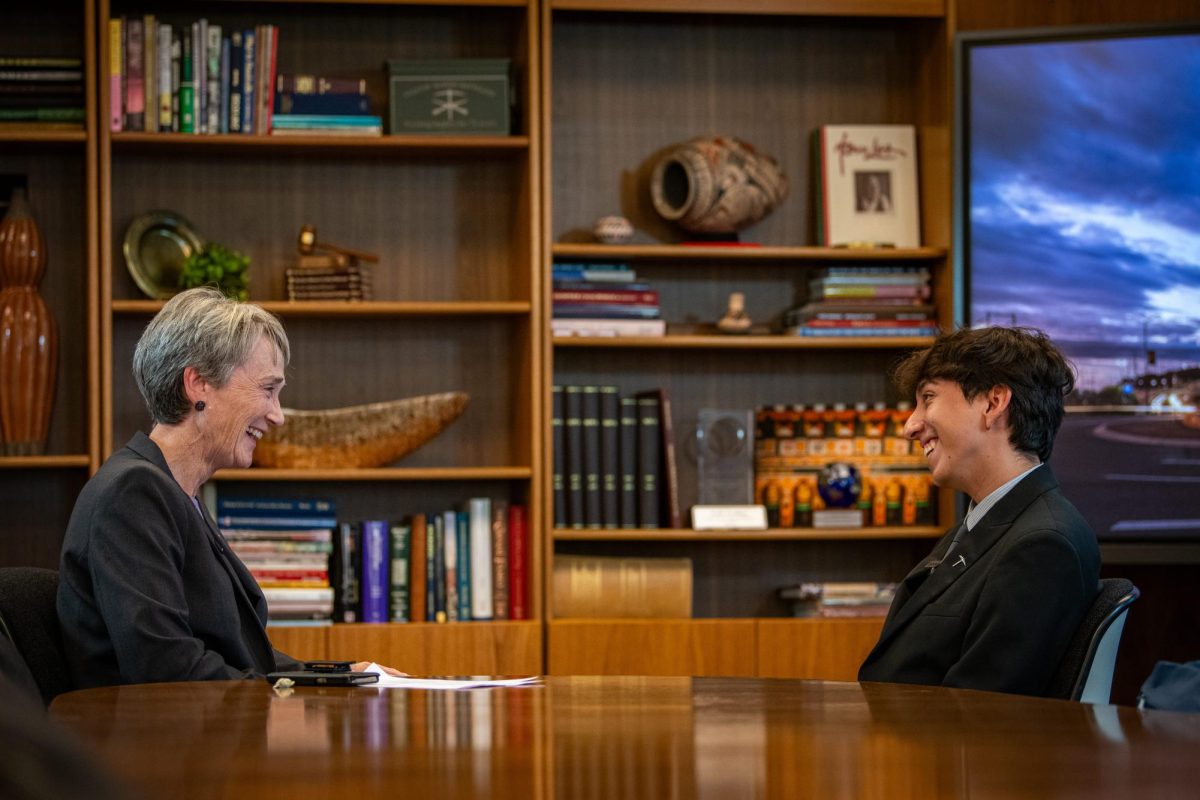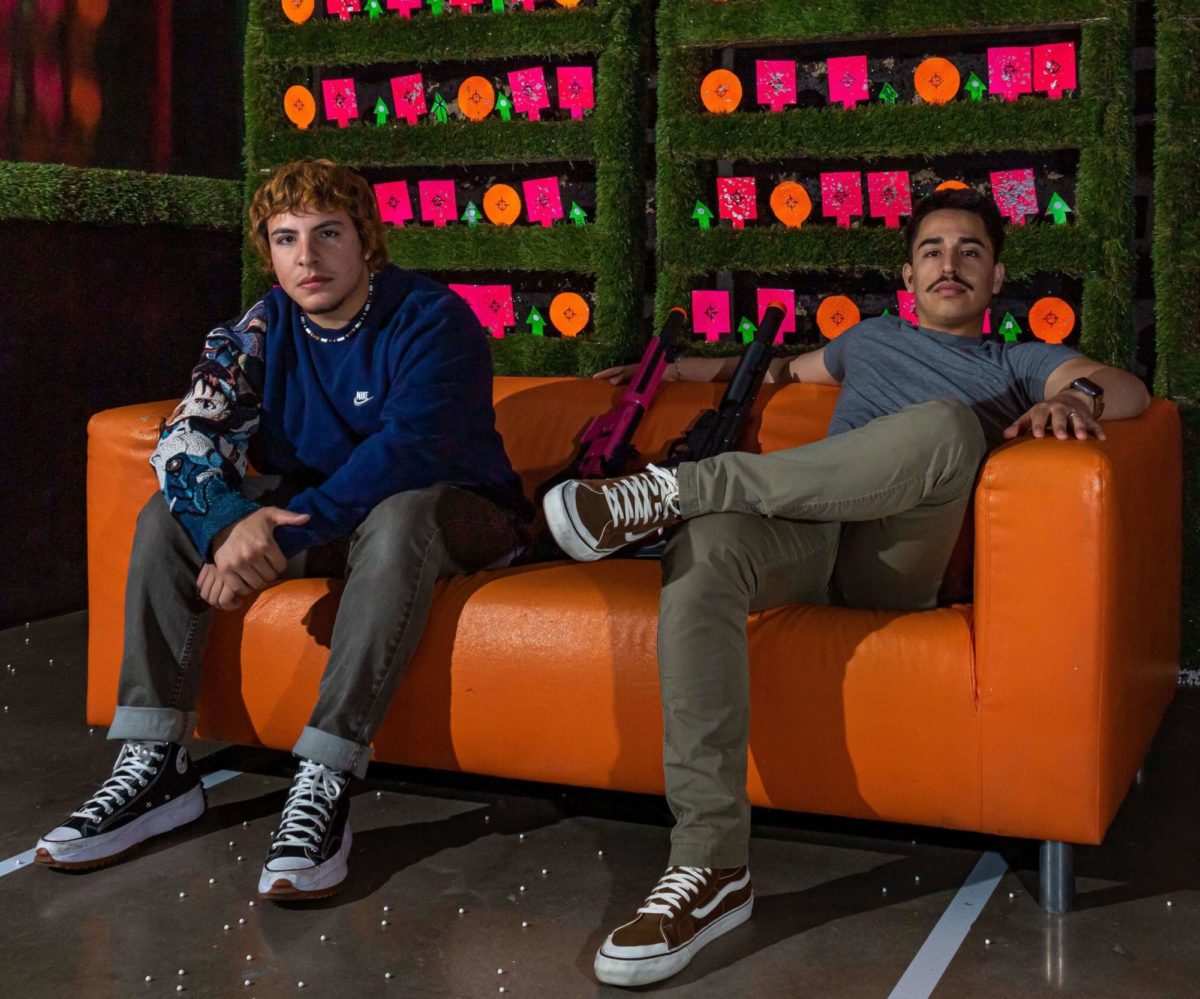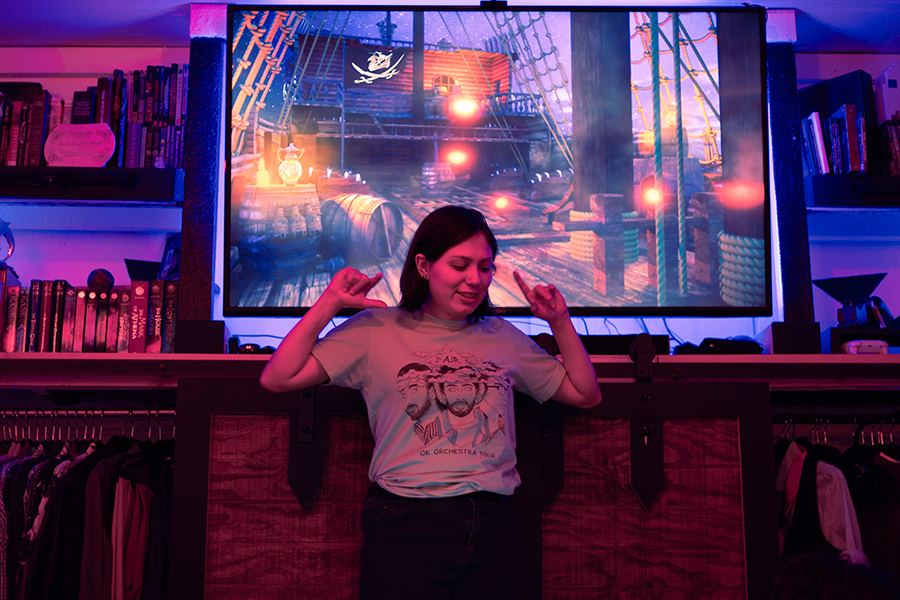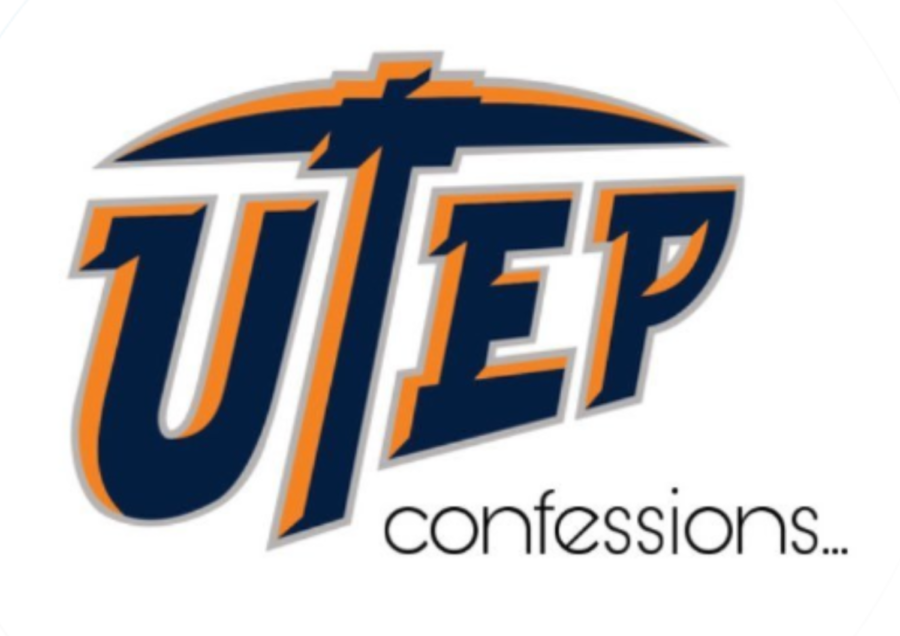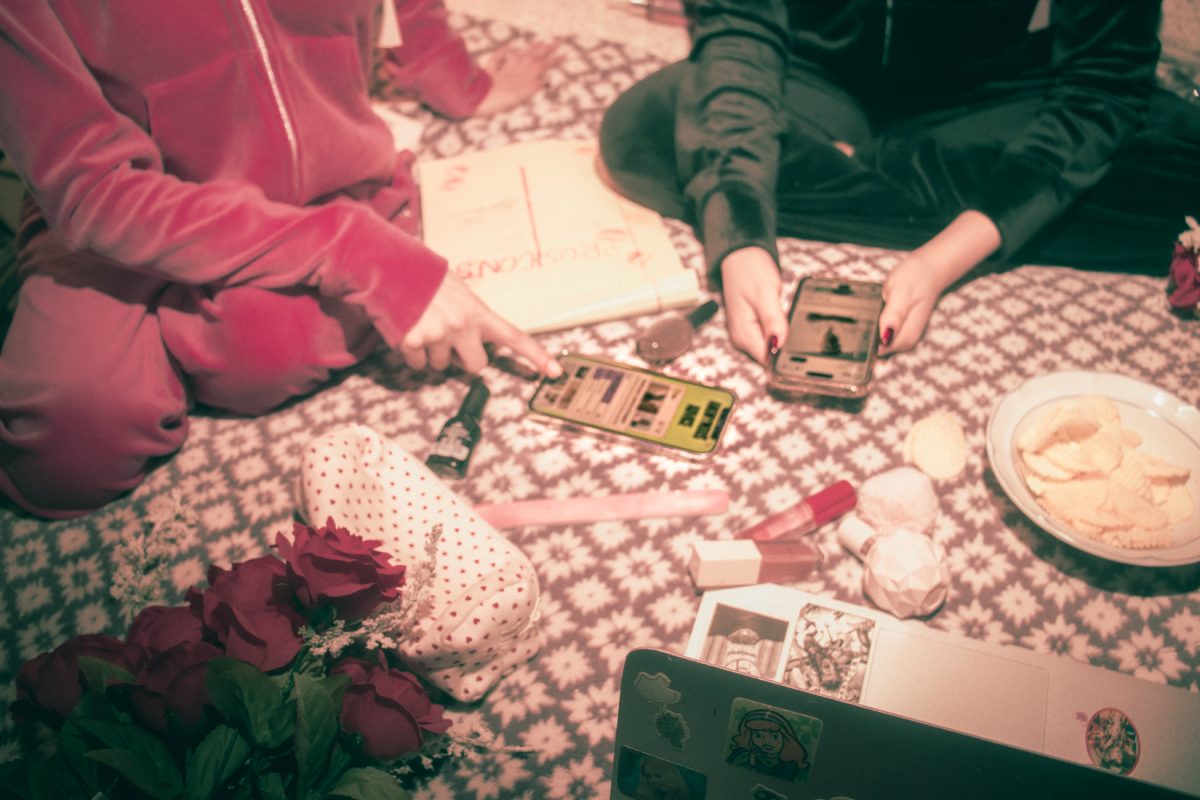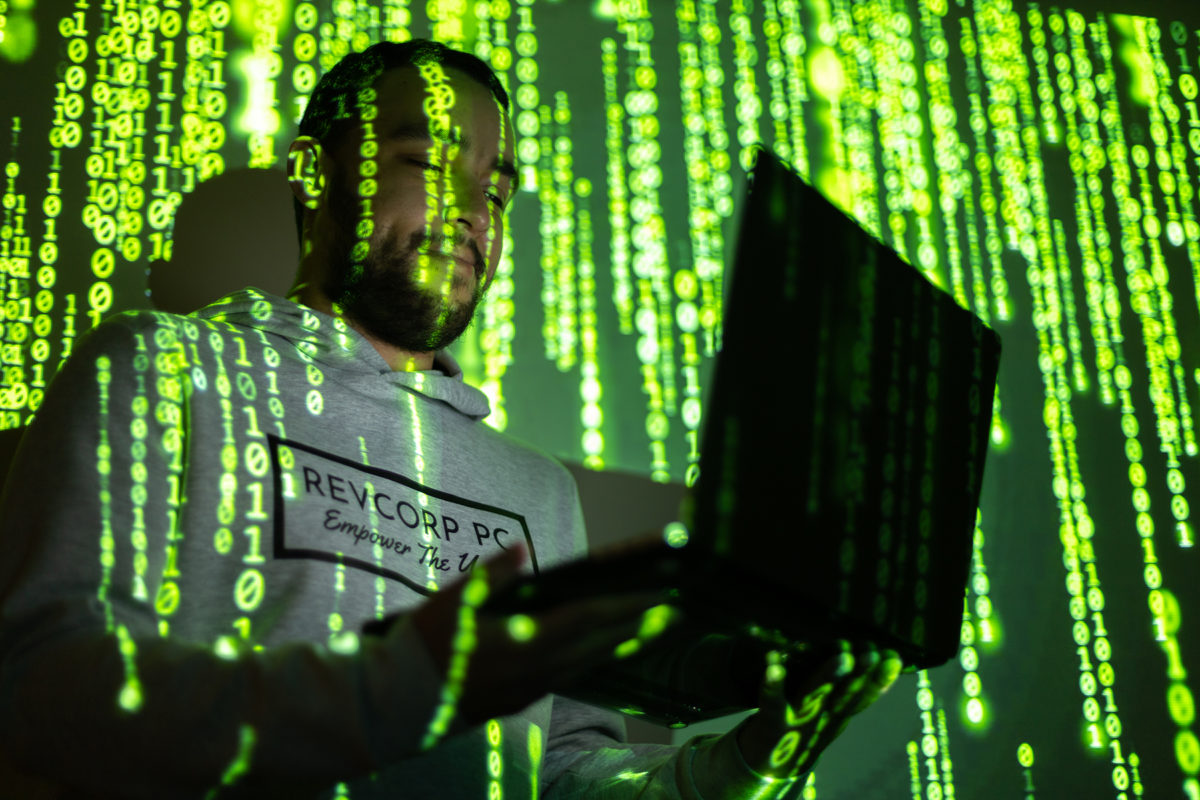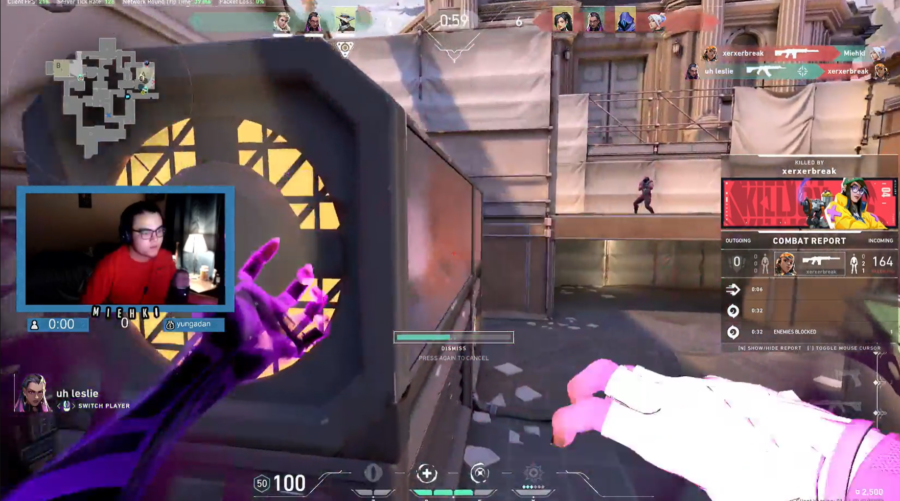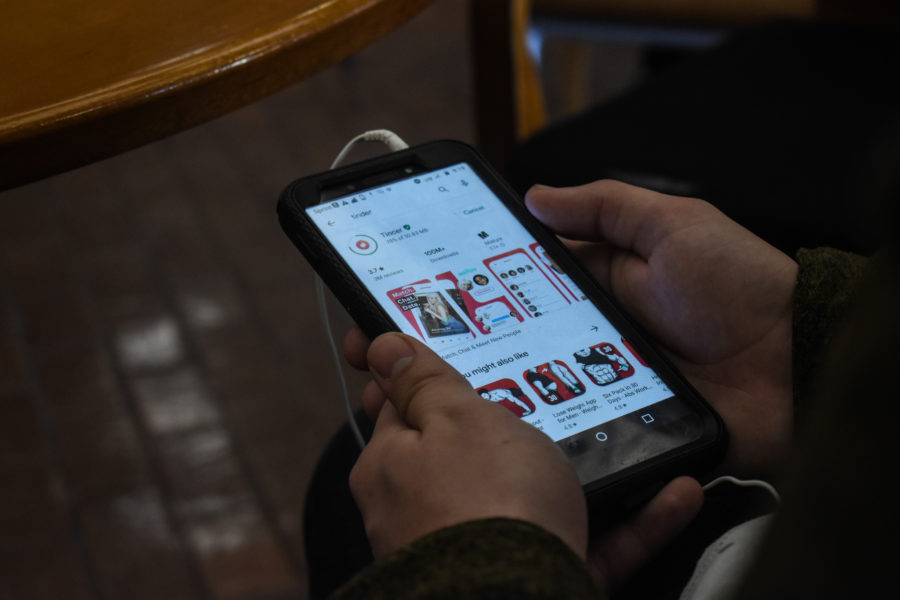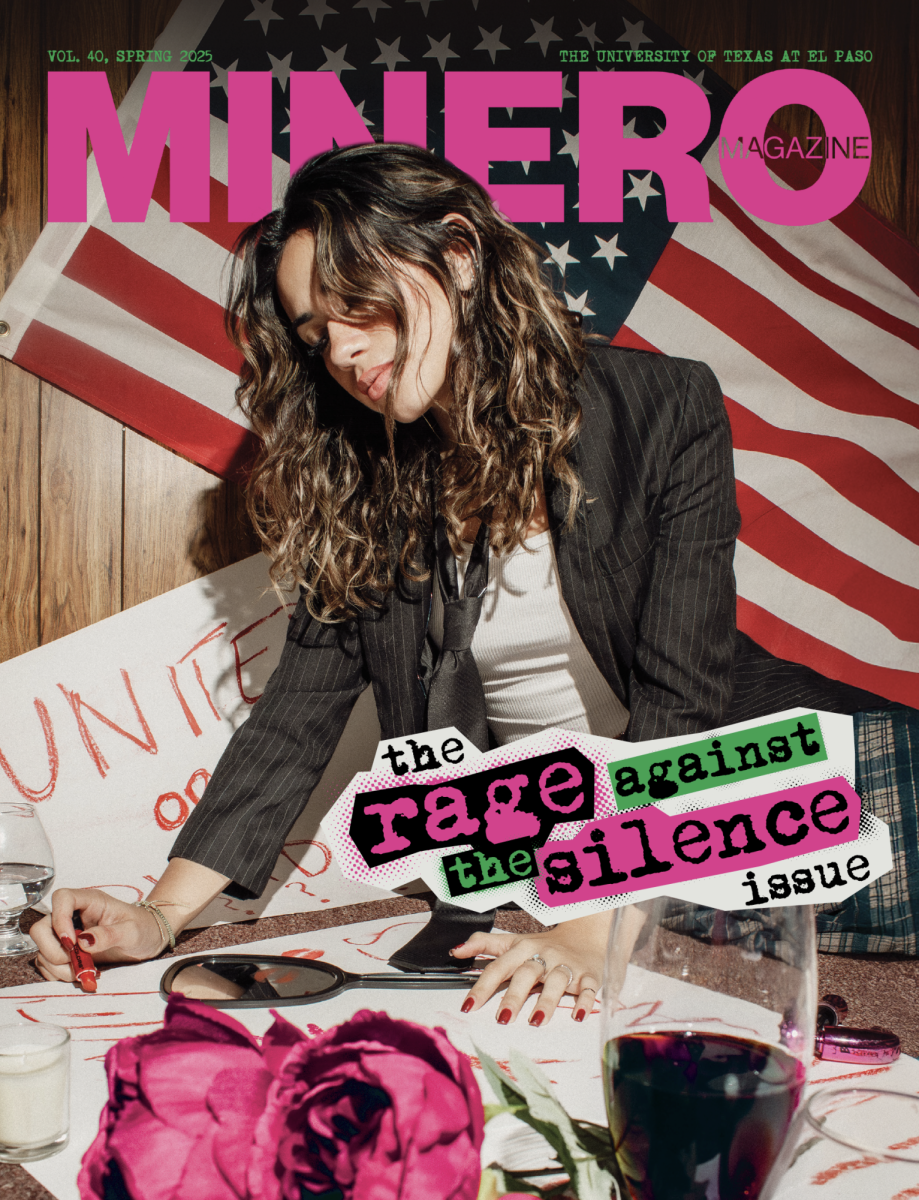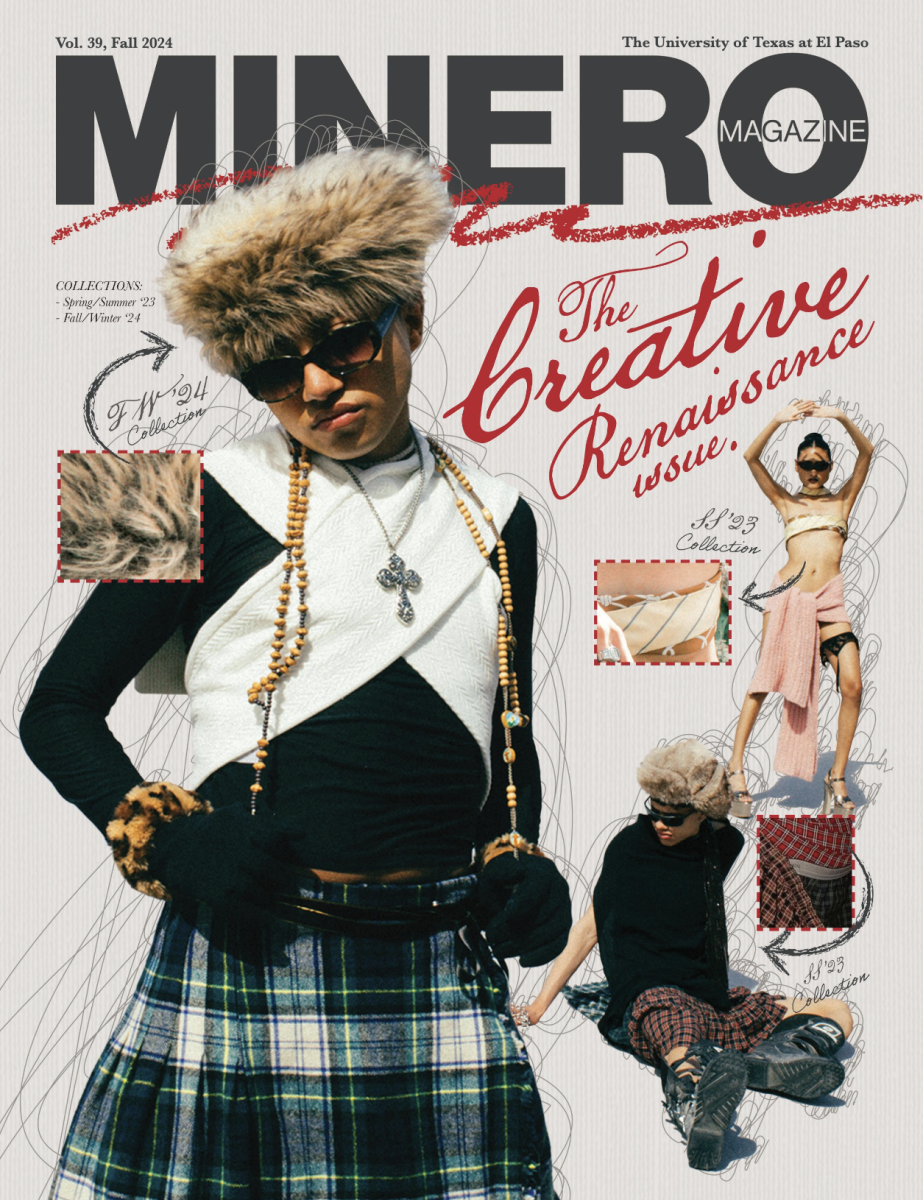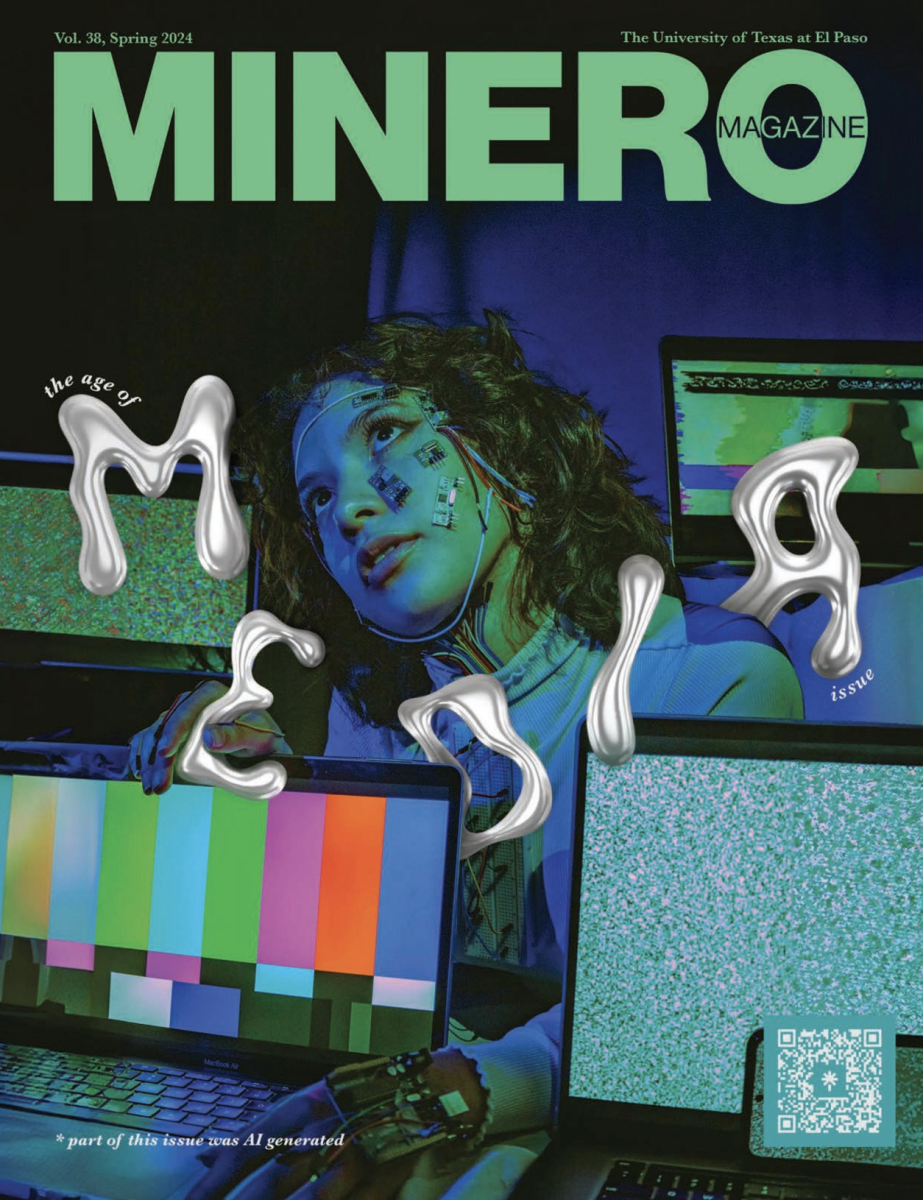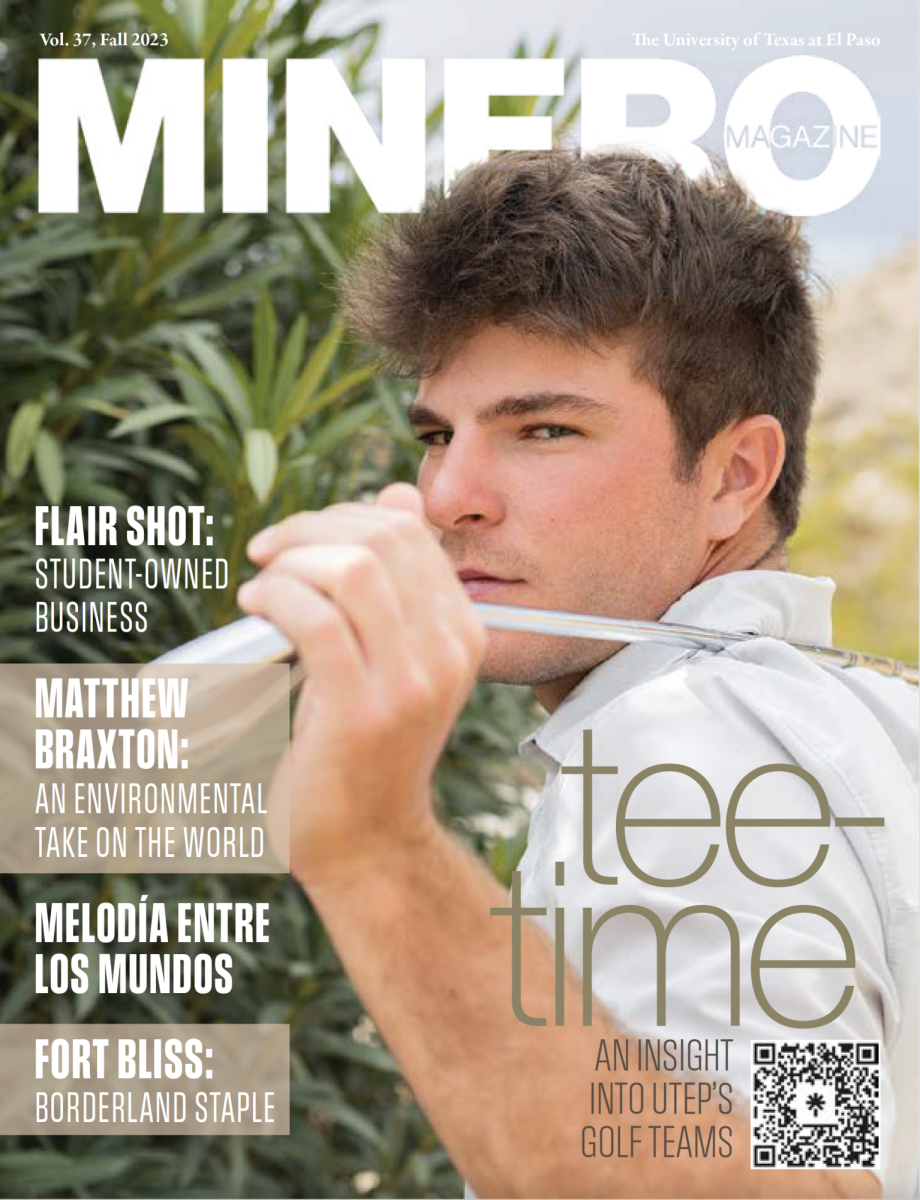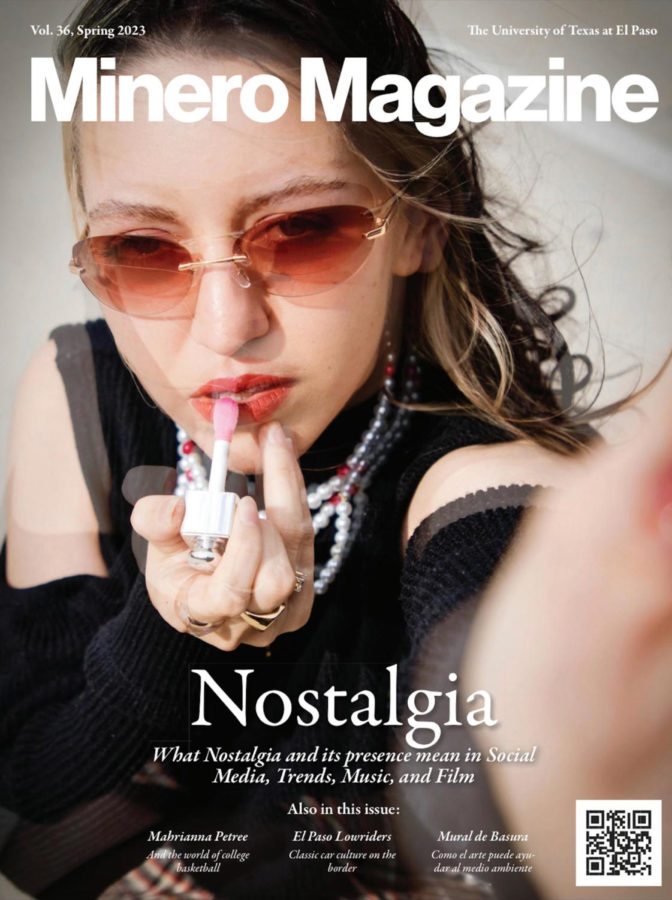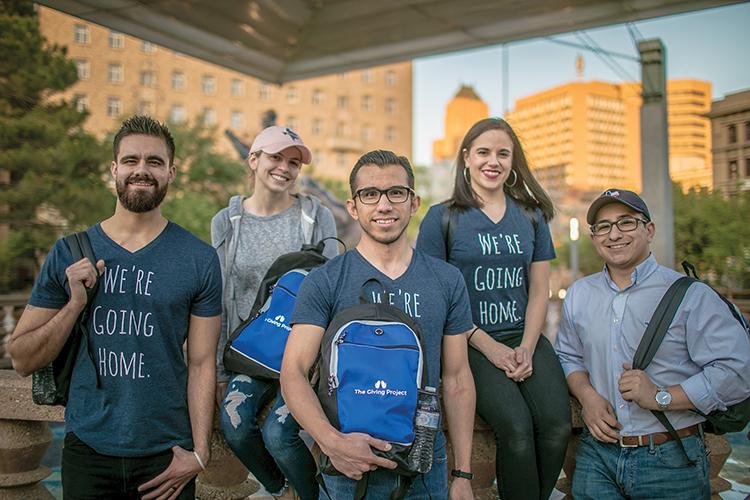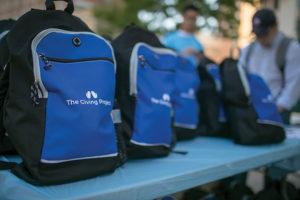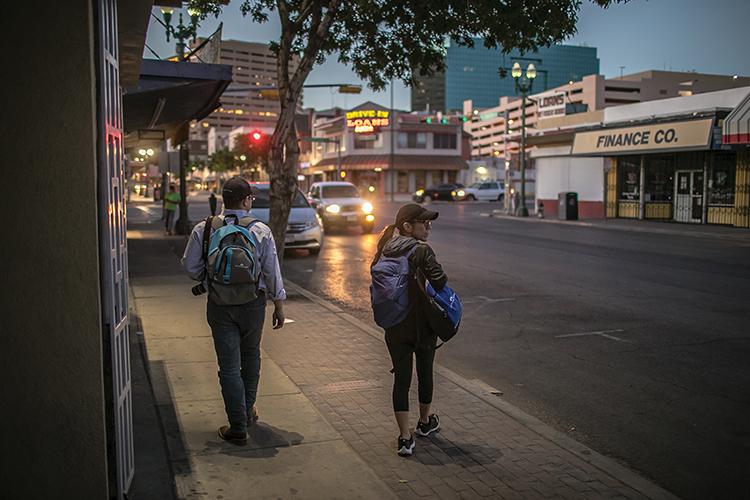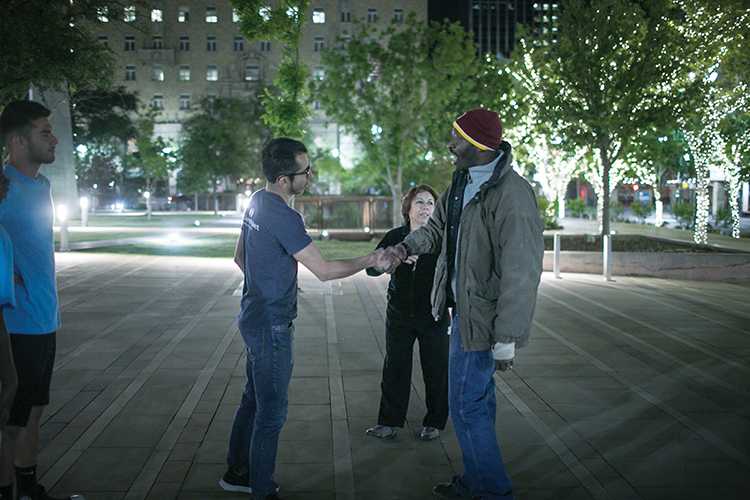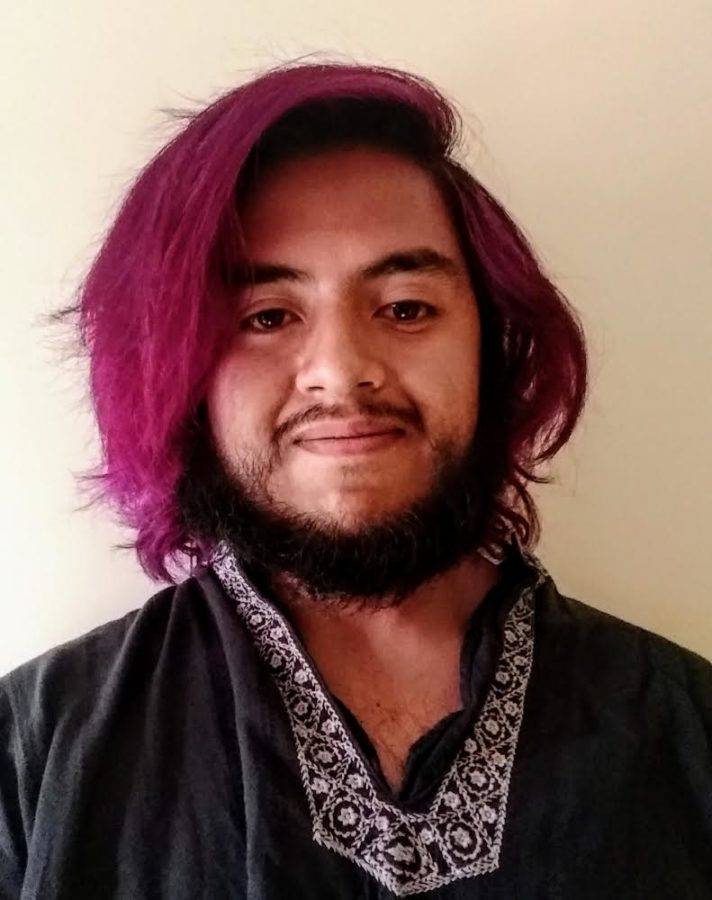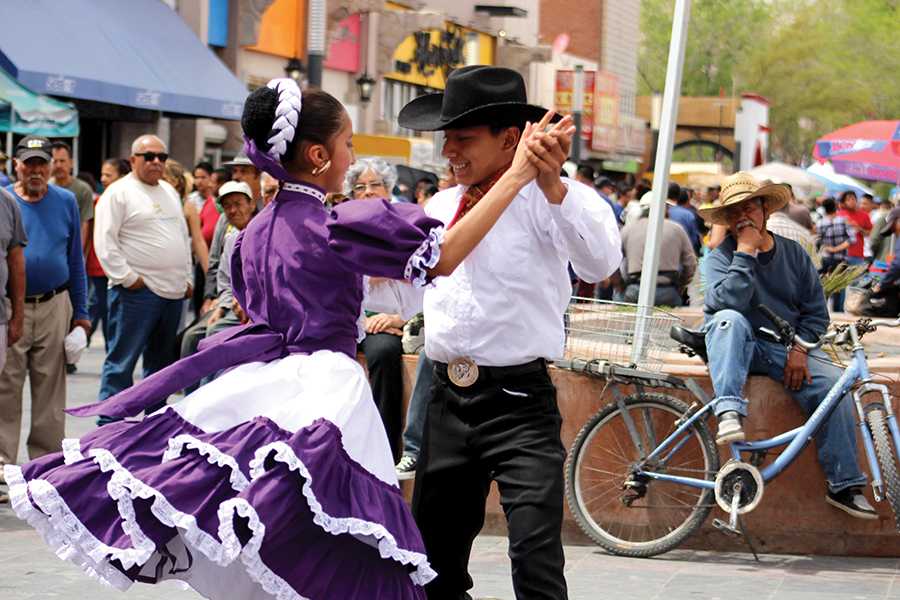By: Grecia Sánchez
Design by: Salma Lozoya & Itzel Lara
Photos by: Robert Corral
Many people are hesitant when deciding to help someone else, especially if the
person lives on the streets.
There may be people who are skeptical about helping the poor due to fear of
them using that money for drugs, because they assume people make bad choices or
because the person’s appearance does not offer a good impression.
Nevertheless, there are others who think otherwise. Some people believe that
those who are homeless have made bad decisions just like anybody else, that
those who own a home are not supposed to judge or think homeless individuals
are not part of the community.
Among those who think homeless people deserve help from the community is the
local organization–The Giving Project (TGP).
Back in Thanksgiving of 2015, Andy Farias, lead of vision at TGP, was enjoying
his holiday break while scrolling through social media when he got an idea.
“I saw a post of somebody that put together a care packet for the homeless
and it was literally just a gallon-sized Ziploc bag with crackers, water bottle
from Great Value brand and the toothpaste and the toothbrush,” Andy says.
“First of all, that’s it? Second of all, they don’t have access to clean water,
you don’t brush your teeth by the corner of the water bottle with your
toothbrush. We can do better than that.”
As soon as Andy noticed the flaws, he got together with a couple of friends
while studying at The University of Texas at El Paso and he proposed a further
approach than “just giving stuff.”
“I don’t want to just give them the backpack, you keep doing the same thing
except you’re just giving them a backpack, they’re still homeless,” Andy says.
“So I did some research and I’m like ‘hey what if we just get this model where
you just go ahead and use the backpack as a tool, it’s a quality backpack, it’s
generous, and we just use that to kinda be able to show you that we’re here,
not just to give you something, but to influence a choice in housing?”
This is how The Giving Project was born. According to their website, TGP is a
non-profit organization that focuses on assembling backpacks with basic goods
and essentials, giving the homeless one less thing to worry about as they
become closer to having a home of their own.
LIFE:PAKS-THE STARTING POINT
Most of the backpacks are distributed to the homeless during events such as
Project Give Night: Downtown, where TGP distributes the backpacks at downtown
El Paso, the area where most of the homeless community happens to be.
Jordan Barron, lead of operations at TGP, explains that during the Project
Give Nights, TGP does a quick briefing about how to approach somebody and then
how to ask someone if they want any help.
“If they accept it, our follow up question is always ‘is there anything else
that we can do to help you with?’ Most of the time it’s yes, so if there’s
something that we can immediately help them with, then we’ll do it,” Jordan
says. “If they need to get to a shelter, if they need to do whatever, we have
the resources to call the people who have the money and the facilities to do
that and we go from giving them the backpack, making that connection to handing
them off to somebody with more resources that can help them with their
situation, get them in a home, get them in a hospital, whatever their case may
be.”
Because of this model, Jordan says that the backpacks are not the end solution
in helping the homeless population in El Paso, but the starting point.
According to Jordan, if TGP “the end solution is to build enough trust with that person that we can
eventually get them to meet up with the other non-profits that we have
partnered with to use their bigger resources to influence a choice in housing,”
Jordan says. According to Jordan, if TGP is not holding an event, TGP wants
people to still feel like they can help by grabbing backpacks at local
businesses such as One:One Downtown and distribute them themselves to the 80
percent of the homeless that last in this situation for 42 days or less,
according to TGP’s website.
Andy emphasizes this is an opportunity. “What I really focus on is developing and nurturing partnerships with
business owners in the community,” Jordan says. “They want to be what’s called
a ‘pick up point’ for us to drop off backpacks with them, 20-30 backpacks. And
then whenever somebody knows or somebody who they see as homeless, or (if) they
just want to carry a backpack in their cars, just in case they come across
someone, they know where to go to pick up these backpacks if they need them.”
Andy emphasizes this is an opportunity for people, who complain that they do
not have cash, to go and give them real help.
“Ultimately it’s about developing relationships to influence housing for
shelter. ‘Cause otherwise, we’re not getting anywhere,” Andy says.
BEING PART OF THE CHANGE
According to Andy, the goal of TGP is to bridge the gap between hope and help,
wanting the community to feel like they are engaged in solving this problem.
Andy says TGP was thought to be community oriented, so “people can own this.”
“It’s not about us, it’s not about like ‘oh, Andy started it,’ ‘oh, it’s about
The Giving Project’ I’m nothing. All I did was had an idea and I want the
community to be part of the fact that they can feel empowered to be part of the
change. That’s it,” Andy says. “We know the problem, we see it all the time
and we don’t want to make eye contact with them when we’re at the intersection.
We want to stop that because, just because it’s a complex issue doesn’t mean
that we shouldn’t approach it. That shouldn’t stop us.”
Jordan also acknowledges the importance of educating the community so that
they understand they are part of the solution as well.
“People want to do all these great things, most of them don’t know how to
start or where to begin, but they don’t need to figure out that stuff. We just
inform people about ‘hey this is the problem. This is the solution and it’s
that easy to take care of it and be a part of it,’” Jordan says. “In return,
those people who are out there that need your help are gonna be more than happy
and they’re gonna feel a little better about living not only in El Paso, but
they’re gonna feel there’s a lot of hope out there for their situation, when
there’s people out there that actually acknowledge it and do something about
it.”
THE MOTIVE–WHAT SETS TGP APART
Andy remembers the first time he ever delivered a backpack to a person during
Thanksgiving of 2015. The experience, he says, changed a lot of perspective.
“It was at a big store, it was on Black Friday and I approached the gentlemen
and he started walking away from me, started cursing a lot, saying ‘no, no, no,
I don’t want your help or anything’ and I’m thrown a little bit,” Andy says.
”I’m not shocked, I’m like, I didn’t know what, probably some kind of
condition, I don’t know, not judging. And I said ‘hey, if you want it, I’ll
leave it here’ and as I’m trying to finish my statement, he cuts me off and
turns around and says ‘no, you have no idea how humiliating it is to stand
here, for like seven hours on a Black Friday where people are coming out of
their doors with their showy bags and the cars can’t even close the doors and
people don’t even give you two dollars, you have no idea.’”
Andy remembers feeling shocked at that moment because he realized he had no
idea of what a homeless person has to live through.
“No one deserves to live that way, that’s somebody’s daughter, that’s
somebody’s son, somebody who had hopes and dreams at some point and we just
treat them like, ‘oh, that’s part of life, you know? They made bad choices,’
so what?” Andy says.
Jordan has also encountered people who don’t want any help.
“That’s perfectly okay, I’m not gonna try to force something that they don’t
want on them. Some people like to live out there and that’s okay, but the fact
is that we try,” Jordan says. “Even though they don’t want anything from us,
that’s their choice, I’m not there to push our agenda on them. I’m just there
to see if they need our help, and if they do, I’m more than happy to help them
with what I can.”
Due to these bad experiences, Andy emphasizes the importance of building trust
with homeless individuals.
“A lot of the things that I’ve noticed too with a lot of responses was that
they’ve had bad experiences getting help. At the end of the day, it scars
them,” Andy says. “So that’s why building trust by just being generous like, ‘I
don’t want anything, you don’t have to go to church, you don’t have to sign
this contract, you don’t have to commit to being sober. No. You’re a human
being and it is ridiculous that in America, you don’t have a chance to earn a
living.”
Andy says TGP gives backpacks because they want people to feel validated.
“There’s ways to open up the doors and if it’s because you have hit rock bottom
and you feel bad about it, I can’t think of it with those shoes cause I’ve
never been there, but let’s do what we can to get you feeling like a human
being,” Andy says. “Restore some dignity, build some confidence, put the
self-worth back in place, as generous as we can, not because we have money, we
don’t, but by being generous through the people that come into play. That’s
why it’s not just about us.”
IT TAKES LESS THAN WHAT YOU THINK
Jordan also acknowledges that part of TGP’s job is to inform people that it
takes “a lot less than what they think it does to help somebody change.”
“People go and buy a shirt for sixty bucks at Hollister, and they buy 10 of
them of every color because they’re cool and they’re nice, but you know, half
of that shirt could fill an entire backpack. And it’s really that simple and
it’s a lot cheaper than people think it is,” Jordan says.
Jordan emphasizes that if everybody had one item to donate, then we could
probably take care of the homeless population in El Paso. According to TGP’s
website, FE:Paks, or Life Personal Assistant Kits, include one pre-pasted
toothbrush, one pack of toothpaste tablets, one skin lotion bottle, shampoo,
conditioner, deodorant, one pack of disposable razors, five pairs of socks,
three portable facial tissue packs, one comb and brush set, hand wipes, two lip
balms, sunscreen, one rain poncho, one bottle of water, two fruit cups, granola
bars, a $10 McDonald’s gift card, among other things.
LIFE:Paks are worth $15 total, according to the same website.
“The expense to help them, what we’re doing, is a drop in the bucket compared
to, you know, ‘I’m gonna start a restaurant.’ That’s a lot more money than what
we’re doing and we get to help way more people because we’re not trying to do
everything, that’s not the point,” Andy says. “You want to bring people to
these active and very capable non-profit organizations that are doing their
work and they just need people coming in.”
PEOPLE ARE PEOPLE
“Them not getting any help is a perception issue. People see them, and they
see that they’re dirty, they see that they’re carrying all their stuff around
and automatically you already have like a mental bias against helping them
because you don’t really know what the situation is and you really don’t care
and that’s the problem,” Jordan says. “But if you just take the time to give
them stuff like a deodorant, shampoo, toothpaste, toothbrush, that kind of
stuff that they can use to kinda clean themselves up and have a little more
pride when it comes to walking into a place and not feel so self-conscious
about the way they look or the way they smell, and it gives them a little boost
and maybe that’s all they need sometimes, just a little boost.”
For Andy, the issue comes down to redefining values so that our community
helps each other and sets us apart.
“People are people. Humans are humans. How they got there, that shouldn’t be
the issue,” Andy says. “If we’re gonna keep drawing lines, forget it, let’s
just give up now because we’re not gonna get anywhere with that mentality of
like, ‘they got this from their situation,’ ‘they were felons,’ ‘they’re drug
addicts,’ you know what? Yes, all of the above maybe. In the end, if we can
help them enough to accept the change, let’s go.”
EN BREVE
Mucha gente puede llegar a dudar cuando se trata de ayudar a otras personas,
especialmente si la persona vive en las calles.
Se teme que el dinero dado en ayuda pueda usarse para comprar drogas, porque
asumen que tales personas toman malas decisiones o porque su apariencia no
ofrece una buena perspectiva sobre el valor de su dinero.
Sin embargo, hay otros que piensan lo contrario. Algunas personas creen que
las personas sin hogar han tomado malas decisiones al igual que cualquier otra
persona y merecen la ayuda de la comunidad.
Entre aquellos que piensan que las personas sin hogar merecen ayuda de la
comunidad, está Andy Farias, quien fue estudiante de la Universidad de Texas en
El Paso y quien tuvo la idea de crear mochilas con útiles personales para
aquellos que no tienen hogar.
“Nadie merece vivir de esa manera, esa es la hija de alguien, ese es el hijo de
alguien, alguien que tenía esperanzas y sueños en algún momento y simplemente
los tratamos como ‘oh, eso es parte de la vida, ¿sabes? Tomaron malas
decisiones ‘¿y qué?”, Andy dice.
En el 2015 durante las vacaciones del día de Acción de Gracias, Andy estaba
en las redes sociales cuando tuvo la idea de crear una organización donde la
comunidad pudiera ayudar a aquellos sin hogar.
Así es como nació The Giving Project, TGP por sus siglas en ingles. De
acuerdo con su sitio web, TGP es una organización sin fines de lucro que se
enfoca en ensamblar mochilas con productos básicos y esenciales que les brindan
a los desamparados una cosa menos de la que preocuparse a medida que se
acerquen más a tener un hogar propio.
Los kits LIFE: Paks, como se le llama a estas mochilas, incluyen un cepillo
de dientes, un paquete de tabletas de pasta de dientes, un frasco de loción
para la piel, champú, acondicionador, desodorante, un paquete de rastrillos
desechables, cinco pares de calcetines, tres paquetes de pañuelos faciales, un
conjunto de peine y cepillo, toallitas para las manos, dos bálsamos labiales,
bloqueador solar, un poncho para la lluvia, una botella de agua, dos tazas de
fruta, barras de granola, una tarjeta de regalo McDonald’s de $10 dlls., entre
otras cosas. Llenar estas mochilas tiene un costo de $15 dlls.
La mayoría de las mochilas se distribuyen durante eventos como Project Give
Night: Downtown, donde TGP distribuye las mochilas en el centro de El Paso, el
área donde se encuentran la mayoría de las personas sin hogar.
Jordan Barron, director de operaciones de TGP, dice que la manera en que la
gente puede ayudar empieza por deshacerse de prejuicios.
“El hecho de que no reciban ayuda es un problema de percepción. La gente los
ve, y ven que están sucios, y que cargan todas sus cosas y automáticamente ya
tienen un prejuicio mental en contra de ayudarlos”, dice Jordan. “Pero si te
tomas el tiempo para darles cosas como un desodorante, champú, pasta de
dientes, cepillo de dientes, ese tipo de cosas que pueden usar para asearse un
poco y tener un poco más de orgullo cuando se trata de caminar hacia un lugar y
no sentirse avergonzados por la forma en que se ven o por cómo huelen y eso les
da un pequeño impulso y tal vez eso es todo lo que necesitan a veces, sólo un
pequeño impulso”.

